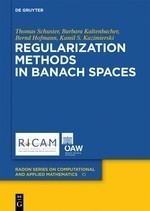Inverse problems and regularization methods

Inverse problems ask about how to get from an indirect measurement to its cause where the relation between the two, the measurement process, is known. This relation is described by a mathematical model, given by a linear or even non-linear operator between topological spaces.
The main difficulty arises from trying to invert the operator. If no continuous inverse to the (measurement) operator exists, measurement errors may be blown out of proportion and cause the reconstruction to be invalid. A typical example is the Radon transform, the mathematical model of the 2D computer tomography. Inverse problems are not only relevant in medical technology, but also in the non-destructive material testing, financial mathematics or in the production industry.
The intrinsical ill-posedness, the discontinuity of the inverse operator, requires a stabilization of the inversion process by a so-called regularization. This is a continuous operation that allows to approximate the discontinuous inverse point-wise. In Hilbert spaces the regularization theory is very well understood and there are many thoroughly analyzed regularization methods. The work group focuses on regularization methods in Banach spaces where this is not the case. On the one hand we aim at extending existing procedures from Hilbert to Banach spaces. We use sequential subspace methods which we analyze and make more efficient. On the other hand we investigate iterative solvers for split-feasibility problems in Banach spaces. These research activities can be found in the published book "Regularization Methods in Banach Spaces".
